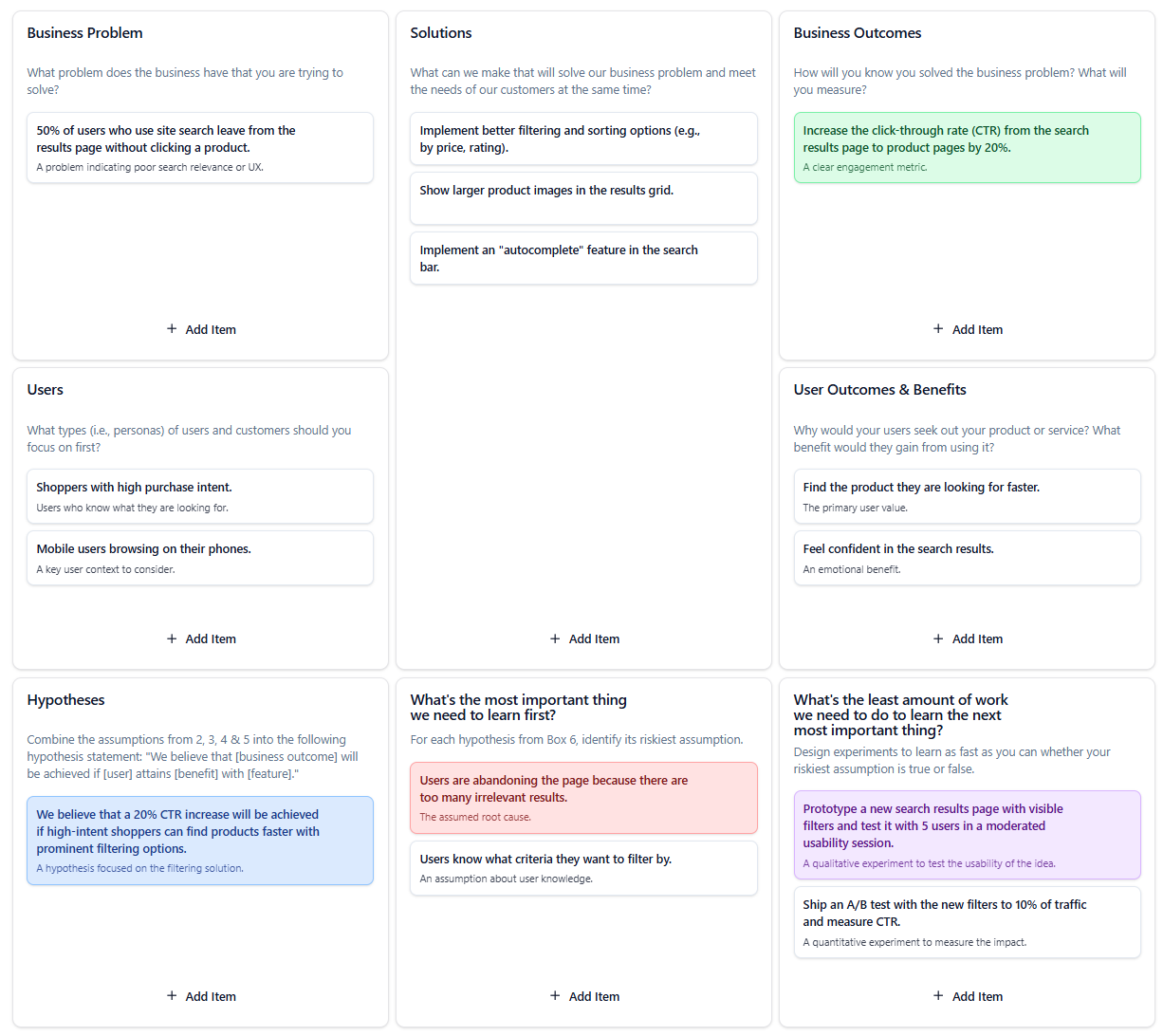E-commerce
E-commerce Search Results Page
A Lean UX canvas for a team focused on improving the usability and conversion of the search results page on an e-commerce website.

Analysis & Interpretation
Background
This canvas targets a leaky bucket in an e-commerce funnel: a high drop-off rate on the search results page. The team is trying to improve product discovery and move users from searching to finding.
Key Strategic Insights
- Metric Pinpoints the Problem: The ‘Business Problem’ (‘50% of users… leave from the results page’) is a powerful metric that clearly identifies the page as a point of friction. The corresponding ‘Business Outcome’ (increase CTR by 20%) provides a clear measure of success.
- Connecting User Need to a Feature: The ‘Hypothesis’ creates a direct link between the user’s need (‘find products faster’) and a specific feature (‘prominent filtering options’). This ensures the team is building something that directly serves a user goal.
- Qualitative and Quantitative Experiments: The canvas wisely proposes two types of experiments. A qualitative ‘usability session’ will answer *why* users are struggling and if the proposed solution is intuitive. A quantitative ‘A/B test’ will then measure the actual *impact* of the solution on the target metric (CTR).
Strategic Summary
This is a well-structured approach to solving a specific usability and conversion problem. The combination of qualitative and quantitative testing is a best practice. The team should start with the qualitative usability test to de-risk their design. If the prototype performs well, they can then proceed with the A/B test to validate its impact at scale.
How This Was Built
This canvas demonstrates how a SaaS team can use visual thinking and AI support to align marketing, product, and analytics teams around conversion goals.

AI Data Interpretation
The AI Suggestion Engine analyzed input metrics such as trial sign-up rate and churn probability, offering direction for the Acquisition and Retention sections.

Visual Structuring for Clarity
Colors were applied to separate quantitative insights from qualitative assumptions, and tags organized the hypotheses under measurable KPIs.

AI Strategy Feedback
After completing the model, the AI Optimization Review pinpointed the Activation stage as the key point to test incentives and messaging personalization.
Bring This Example to Life
Load this example in the app to explore your data visually, refine your sign-up flow, and test how AI insights can guide measurable improvements in conversion.
